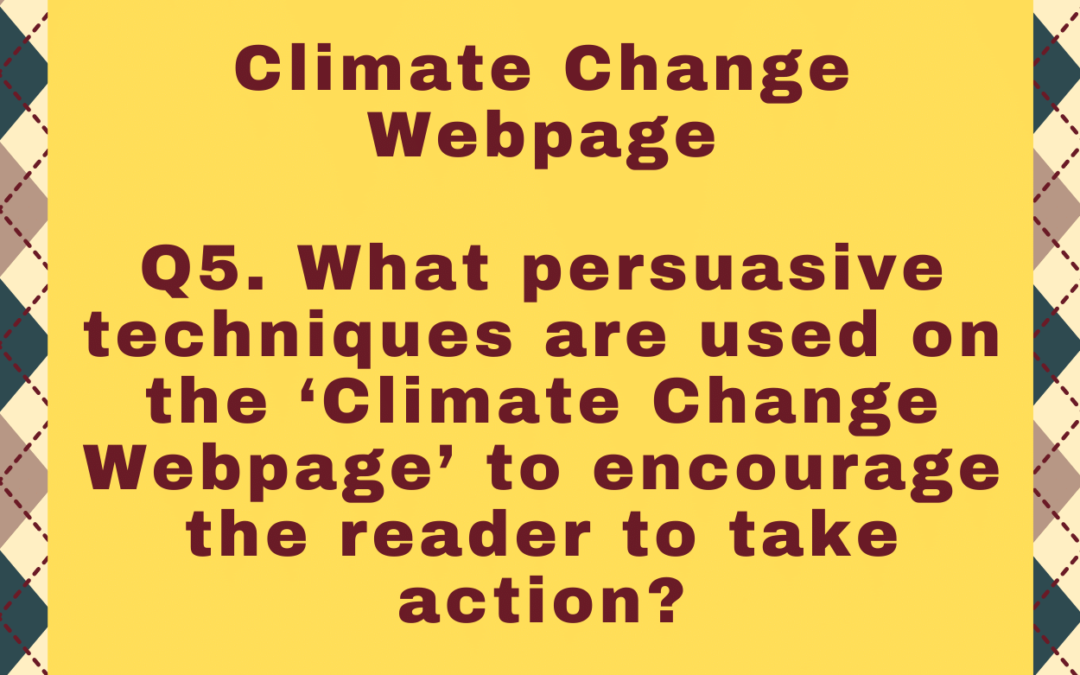Edexcel English IGCSE: Climate Change Webpage
Q5. What persuasive techniques are used on the ‘Climate Change Webpage’ to encourage the reader to take action?
In your answer, you could write about:
- the layout of the article;
- the way that the writer addresses the reader;
- any language techniques used by the writer.
You should refer closely to the passage to support your answer. You may use brief quotations.
Edexcel English IGCSE Model Essay by an Expert
On the Climate Change Webpage, the author uses a variety of techniques to persuade the reader to take action, to help reduce the impact of climate change.
The layout of the article draws the reader’s attention to the main article, and also to their potential role in helping assuage the effects of climate change. The main article is in the centre of the page, which draws the reader’s eye and encourages them to read it. The subtitle, “What you can do” is in bold; this highlights immediately to the reader, even if they are simply skim-reading, that they have a role in protecting the world against climate change. The picture of the melting ice cap appeals to the reader’s sympathy; it is beautiful, but appears small and isolated, since it is melting away. The prominent links at the bottom of the page, particularly the “Take Action” link, encourage the reader to click on them. The “Take Action” link is in capital letters, which immediately draws the reader’s eye. The word “action” is repeated throughout the article, and thus the use of the word on this link makes the reader keen to act accordingly.
The writer creates a sense of communal and individual responsibility through the way in which the reader is addressed. The second person plural pronoun is used throughout the article, which creates a sense of solidarity between the charity, Greenpeace, and the reader, as though they are on the same team. Furthermore, the use of “we” evokes the sense of a global community, particularly in the phrase “We’re the last generation that can stop this global catastrophe”. This makes the reader feel part of a group of people who are unique in their ability to save the world; the word “last” evokes urgency and creates a sense of responsibility for future generations. Once this sense of teamwork has been developed, the writer introduces direct address to the reader : “we need your help”. This is a direct plea to the reader, encouraging them even more strongly to join the community fighting against climate change.
The writer uses a variety of language techniques to persuade the reader to take action. Perhaps the most striking is the combination of alliteration and emotive language in the phrases “catastrophic climate change” and “climate chaos”. The words “catastrophe” and “chaos” are very dramatic, as they are only used to describe the worst possible circumstances. This highlights the importance of action. The alliteration also contributes to this sense of drama, and creates a prominent phrase which will stick in the reader’s mind.
On this webpage, the writer plays on the emotions of the reader – sorrow, shock and guilt – to induce a sense of responsibility for climate change, and thus to encourage them to take action to stop it.



